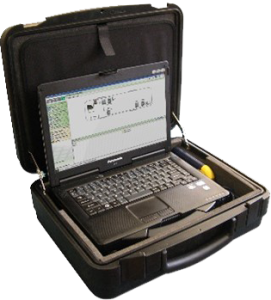Automobile Diagnosis
Warning lights on display - what they do mean

Check Engine warning light. It means there is a problem with the engine electronics it may be a sensor or actuator. Must be checked with a diagnostic equipment in order to avoid further damage on the engine.

Engine oil pressure. It should stay on for 1-2 seconds then it must be switched off. This is one of the most important warning lights if this stays on it means the engine oil pressure is low and the engine will have excessive internal damage. Stop the car immediately.

Engine temperature warning light, indicating that the engine temperature is higher than normal. Stop the car immediately in order to avoid engine damage.

Fault with the charging system. The battery is not charging causing the battery voltage to drop resulting in the battery not charging with downgrading of the electrical parts of the car. Eventually the engine will not start. Most common faults include faulty alternator (charger), snapped alternator belt, burnt fuse.

Fault in the ABS system (Anti Block Brake System). A function incorporated in the brake system to avoid locking of the wheels during hard braking in order for the driver to keep control of the car. With the light on this function is not working. A diagnostic tool must be used to read the fault codes with I the system and rectify the fault. Common faults include faulty sensors faulty actuators, wiring fault of the system, control unit.

ESP/ESC / TRACTION system. Fault in the ESP system (Electronic Stability Control). A sub function of the ABS system. Is a system that helps the driver to regain control of the car during a loss of traction on the road. With the light on this function is not working. Common faults include faulty sensors faulty actuators, wiring fault of the system, control unit.

SRS system. With the light on there is a fault within the SRS (Safety Restraint System), that includes Air-Bags and safety belt pre-tensioners. With the light on the system may not function during an accident. Common faults include faulty sensors faulty actuators, wiring fault of the system, control unit.

TPMS system. Tyre Pressure Monitoring System. With the light on one or more of the tyres are under pressure, or there is a fault within the system. Most common faults include tyres under pressure, fault within the control unit or data transmission.

Brake light warning. Most common faults include handbrake on, handbrake switch, low brake fluid level, worn brakes.
- Do you have any general enquires?

Diagnosis
 Modern vehicles are equipped with a diagnostic socket that when connected to an appropriate diagnostic tool it will make it possible to communicate with the vehicle electronic control units. Modern vehicles are equipped with numerous systems that make driving safe, eco-friendlier, smoother driving with driving aids.
Modern vehicles are equipped with a diagnostic socket that when connected to an appropriate diagnostic tool it will make it possible to communicate with the vehicle electronic control units. Modern vehicles are equipped with numerous systems that make driving safe, eco-friendlier, smoother driving with driving aids.
When something goes wrong the computer for each system will detect the fault and light the relevant warning light in the dashboard also setting the system in safe mode or even completely cancelling the system in order to avoid further damage.
At AMN with the aid of up-to-date diagnostic equipment we read the fault codes and analyse them through our specific data through professional software in order accurately diagnose the fault to perform only the necessary repairs needed. Being repairs through parts replacement, repairs of existing parts, update of control unit software or any combination.